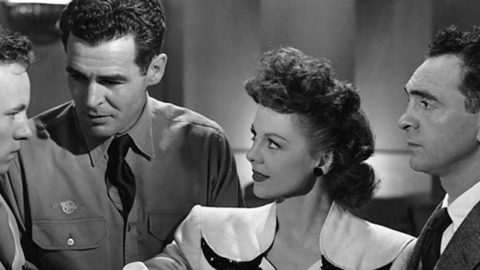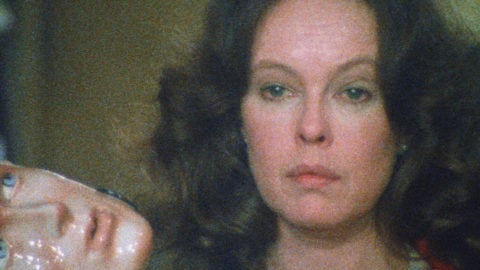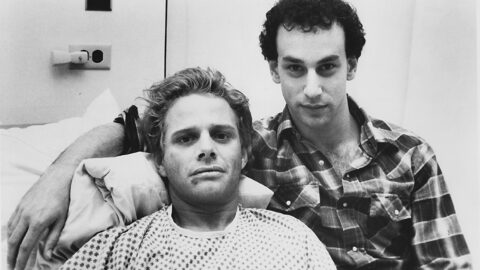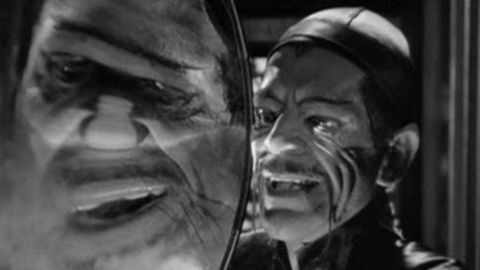Queer & Now & Then: 1989
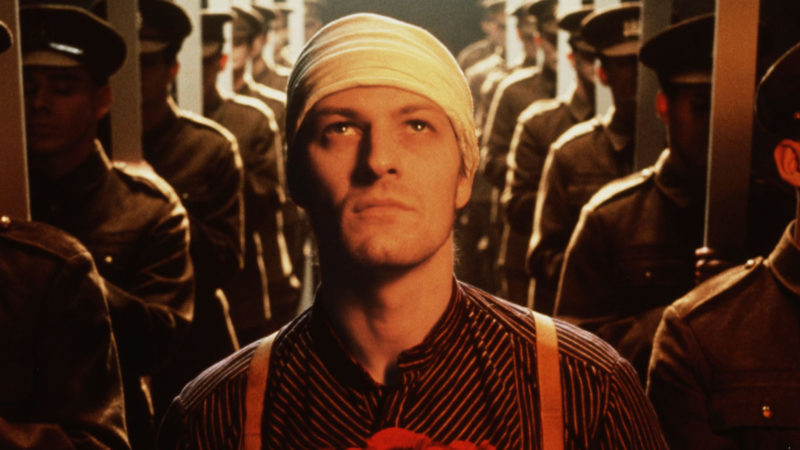
The benefits of the New Queer Cinema of the ’80s and ’90s were not just artistic but sociohistorical. The reconsideration and excavation of important queer texts and figures was as crucial to the movement as the fostering and nurturing of fresh new voices. Think of Isaac Julien’s Looking for Langston (1989), with its references to and evocations of the work of black gay writers and poets such as Langston Hughes and James Baldwin. Or Sally Potter’s Orlando (1992), which forever cemented the queerness of Virginia Woolf’s gender-bending 1928 novel, written as a love letter to a longtime female paramour. Or Tom Kalin’s Swoon (1992), which dares a tightrope reappraisal of gay killers Leopold and Loeb. Even Cheryl Dunye’s The Watermelon Woman (1996) takes as its narrative the recovery of and the importance of cultural legacy, as its contemporary protagonist, a lesbian black filmmaker, digs into the past to understand more about a (fictional) gay black actress from the 1930s. It’s wholly appropriate that one of the defining queer images of the era was David Wojnarowicz’s black-and-white 1992 photograph Untitled (Face in Dirt): is Wojnarowicz’s visage, barely visible as it pokes through gray stone and dirt, eyes closed, dead or alive? Is he being unearthed from history or, as was true of homosexuals during the height of the AIDS epidemic, are forces attempting to bury him?
Derek Jarman’s oeuvre is made up of these kinds of excavations. This singular polymath—who was allergic to mollifying viewers and who became an unlikely guiding light of the New Queer Cinema—was acutely aware of the power and the necessity of revealing for 20th-century viewers an alternative, hidden history. From his breakthrough feature, Sebastiane (1976), a homoeroticized account of the life and death of the martyred 4th-century Roman soldier who’s become a gay Christian icon; to Caravaggio (1986), which finds the 16th-century Italian painter (whose homosexuality remains a matter of scholarly debate) in a queer love triangle; to the radical 1991 updating of gay playwright Christopher Marlowe’s 1594 work Edward II, about the English king’s tragic relationship with his male lover Gaveston, Jarman was consistently returning to marginalized historical moments or forgotten gay individuals to draw essential parallels to his present day. And as one of the few public artists who came out as HIV-positive in an era rife with persecution against gay men, Jarman was on an artistic mission that was increasingly urgent: the purging of gay history was happening in real time, right then, right now.
The social responsibility inherent to Jarman’s work, however, was anything but medicinal. Today, a middling, passive, desexualized film like Morten Tyldum’s The Imitation Game gets championed for “shining a light” on hidden gay histories; Jarman had zero interest in patting his viewers’ backs after enlightening them. There was little comfort to be had from his work, the tragic histories on screen communicated via austere, highly constructed aesthetics. And even when his films occasionally didn’t seem explicitly gay-themed, there was a queer importance or motivation behind it. Take 1989’s War Requiem: among his most challenging, digressive films, a visual imagining of Benjamin Britten’s 1962 oratorio of the same name, and a largely dialogue- and narrative-free work that combines found footage and dramatic tableaux, 35mm and Super 8 film, and which functions as a kind of extended excursus on the nature of war and violence. Yet it’s not just the mildly homoerotic imagery, or even the viewer’s assumed knowledge of Jarman’s sexuality, that makes War Requiem an important gay film: its historical reference points—its artistic necessity and reason for being—emerge out of largely unwritten 20th-century gay histories, laying them over a larger, abstracted history of a hundred years of bloody international conflicts.
In making War Requiem, Jarman implicitly places himself in a lineage with other important gay Western artists: the hugely influential composer Britten, as well as the poet Wilfred Owen, a Shropshire lad tragically killed in action at age 27, whose work and death inspired Britten to write the piece in the first place. Britten’s “War Requiem,” an orchestral and choral chamber piece written to commemorate the rebuilt Coventry Cathedral following its bombing during World War II, is made up of six musical movements, and within those he set traditional text (the Latin Mass for the Dead), sung by soprano and boys’ choir, as well as nine elegiac poems by Owen, which are sung by tenor and baritone. Owen’s writing in turn invokes a swath of early 20th-century British gay life, as Owen’s friendship with the gay soldier turned pacifist poet Siegfried Sassoon (himself the subject of a planned upcoming film from gay director Terence Davies) brought him briefly into a social circle that included novelist E.M. Forster and poet Rupert Brooke (“the handsomest young man in England,” per Yeats). Jarman’s War Requiem is then a film inspired by music inspired by poetry—a rich, palimpsest-like work that constantly summons the experiences and philosophies of gay artists.
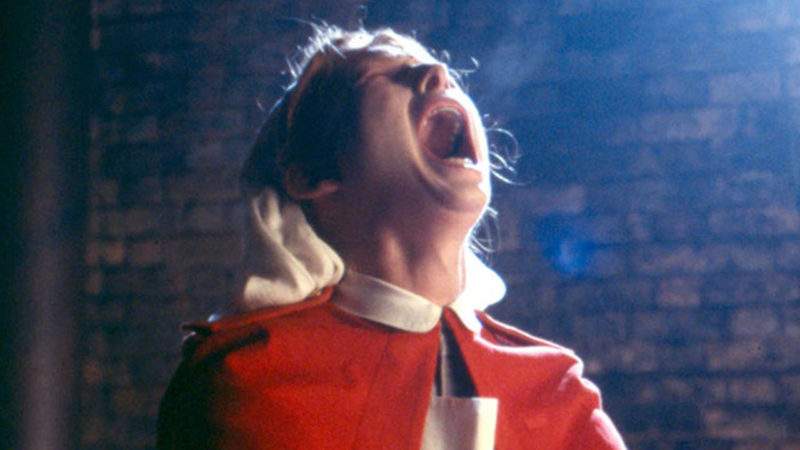
Further queering the film, for his soundtrack Jarman used the recording from Britten’s own, famous 1963 performance of the Requiem, which features among its singers the English tenor Peter Pears, his muse and lover from 1937 until Britten’s death nearly 40 years later. Owen is himself represented on screen (by actor Nathaniel Parker) less as a concrete character than a presiding presence, a figure who stands in for the plight of all soldiers in this barbaric, absurd world. Throughout the film, there are other soldiers, of different nationalities and ages, who might as well be alternate versions of Owen, including, during the film’s opening, a wheelchair-bound man—credited only as The Old Soldier—being tended to by a nurse (Tilda Swinton) outside a grand Victorian-style hospital. In what now seems like a miracle of casting, the Old Soldier is portrayed by Laurence Olivier; though the actor appears infirm and we don’t hear his world-renowned mellifluous voice, his presence itself brings an undeniable charge, and it would be his final on-screen appearance before his death in the summer of 1989. (Olivier’s persona summons a kind of gay history itself, although, as is usual for most 20th-century actors, his homosexuality has remained a point of rumor and contention.) Also appearing throughout the film are the blond Unknown Soldier (Owen Teale), perhaps Owen’s lover, and the German Soldier (Jarman mainstay Sean Bean), evoked with such sympathy as to nullify the common notions of good and bad that create enemies and fuel conflicts.
In the early scenes with Olivier, we hear our first recitation of Wilfred Owen’s poetry, from his “Strange Meeting,” which describes the infinite loneliness and pain of war, written the same year he was killed in battle. This is the only time Owen’s stanzas will be delivered outside of the operatic context, and thus the power of his verse—“By his dead smile I knew we stood in Hell”—drives the film, becoming its sort of beckoning call. All of Jarman’s War Requiem feels like it resides in a liminal space between life and death, as though Britten’s music and Owen’s words emanate from a kind of historical purgatory. By following Britten’s composition, and setting his mythical version of Owen in nonlinear fashion into the piece’s six separate movements, Jarman creates a constantly regenerating character, one who seems to die over and over, in different, heavily symbolic contexts.
Some segments make gestures toward a more literal, or at least realist, narrative, with images of military training and trench-digging, or, in some of the most outwardly homoerotic passages, of soldiers sensitively tending to one another in the moments between battle: shaving, soaking feet, carrying each other. But for the most part, Jarman places his soldiers in a metaphorical, timeless realm, employing surreal imagery and cinematic or religious references. One sequence, a hand-to-hand winter skirmish, invites comparisons to Cocteau’s Blood of a Poet (1932) in its depiction of fatal violence amidst a snowball fight. In another, Jarman casts Owen as the Old Testament’s Isaac, bound and laid out on a slab before being murdered by his father Abraham. Jarman here evokes Owen’s revisionist Christian allegory “The Parable of the Old Man and the Young,” in which Isaac is not spared, despite the angel’s protestations. This bloodletting, the film and the poem infer, is humanity’s primal scene, flowing through history, culminating in the conflicts of the past century, which Jarman represents as documentary archival footage from the first two World Wars through the Vietnam and Angolan Wars, sometimes with graphic footage that’s difficult to watch yet edited together in such a quick fury that it’s hard to look away.
Jarman’s film is a guttural wail, exemplified by Swinton’s nurse, who recurs throughout in different contexts, reading letters from the home front, tending to shell-shocked soldiers, or in ambiguously classical form, such as when she appears as an Ophelia-like figure in the film’s arguable tour de force: an uncut medium shot in which, over the course of eight minutes, a relentlessly hair-braiding Swinton runs the gamut from spaced-out melancholy to tearful sadness to derangement to resignation, all set to Britten’s fourth movement (“Sanctus”). In War Requiem, the scope of history can do little more than incite madness. This is the only sane response in a world where our youths are regularly sent off to be slaughtered. Fortunately, it’s also a world where the humane lyricism and beauty of queer artists like Wilfred Owen, Benjamin Britten, and Derek Jarman, who used poetry, music, and cinema to make sense of our sadness, have reverberated down the decades.
Michael Koresky is the Director of Editorial and Creative Strategy at Film Society of Lincoln Center; the co-founder and co-editor of Reverse Shot; a frequent contributor to the Criterion Collection; and the author of the book Terence Davies, published by University of Illinois Press.



